Compression Creep and Thermal Ratcheting Behavior of High Density Polyethylene (HDPE)
Abstract
:1. Introduction
2. Materials and Methods
2.1. Experimental Setup
2.2. Test Procedure and Material Specifications
3. Results and Discussion
3.1. Creep Strain
3.2. Creep Modulus
3.3. Thermal Ratcheting
3.4. Thermal Ratcheting Strain
4. Conclusions
- The HPDE material exhibits substantial creep damage under different compressive and thermal load conditions. The specimen shows a growth of 28 times the creep strain at 21 MPa from 7 MPa of compressive stress, while the increase in creep strain from the lowest tested temperature to highest tested temperature is 7-fold.
- The creep strain is directly proportional to the applied load and applied temperature, exposing the vulnerability of the material.
- Creep modulus is dependent on the applied stress. The magnitude of creep modulus decreases with increase in applied compressive load and material temperature. The maximum loss of creep modulus occurred at the highest applied stress and temperature, respectively.
- The impact of thermal ratcheting is evident, where the extent of cumulative deformation is dominated by the compressive load, followed by material temperature. The thermal ratcheting is very similar to the mechanical ratcheting or fatigue, causing an accumulation of deformation with each thermal cycle.
- In addition, all HPDE specimens demonstrate thinning of structural thickness under thermal ratcheting, and none of the specimens show any sign of saturation of deformation under the 20 tested thermal cycles.
- The thermal ratcheting strain of HDPE material is influenced by applied load, temperature, time period of creep, and number of thermal cycles. TRS is higher for the tests without creep, suggesting the deformation due to thermal ratcheting is critical during the initial period of the operation.
Author Contributions
Conflict of Interest
References
- Niklas, H.; Eifflaender, K. Long-term creep effects with polyethylene and polyvinylchloride pipe. Kunststoffe 1959, 49, 109–113. [Google Scholar]
- Bergen, J.R.L. Creep of thermoplastics in glassy region—Stress as reduced variable. In Proceedings of the 25th SPE Annual Technical Conference on Society of Plastics Engineers, Stamford, CT, USA, 15–18 May 1967; pp. 239–243. [Google Scholar]
- Zhang, C.; Moore, I.D. Nonlinear Mechanical Response of High Desnity Polyethylene. Part I: Experimental Investigation and Model Evaluation. Polym. Eng. Sci. 1997, 37, 404–413. [Google Scholar] [CrossRef]
- Zhang, C.; Moore, I.D. Nonlinear Mechanical Response of High Density Polyethylene. Part II: Uniaxial Constitutive Modeling. Polym. Eng. Sci. 1997, 37, 414–420. [Google Scholar] [CrossRef]
- Lai, J.; Bakker, A. Analysis of the non-linear creep of high-density polyethylene. Polymer 1995, 36, 93–99. [Google Scholar] [CrossRef]
- Colak, O.U.; Dunsunceli, N. Modeling Viscoelasttic and Viscoplastic behavior of High Density Polyethylene (HDPE). J. Eng. Mater. Technol. 2006, 128, 572–577. [Google Scholar] [CrossRef]
- Hamouda, H.B.H.; Simoes-betbeder, M.; Grillon, F.; Blouet, P.; Billon, N.; Piques, R. Creep damage mechanisms in polyethylene gas pipes. Polymer 2001, 42, 5425–5437. [Google Scholar] [CrossRef]
- Reis, J.M.L.; Pacheco, L.J.; da Costa Mattos, H.S. Tensile behavior of post-consumer recycled high-density polyethylene at different strain rates. Polym. Test. 2013, 32, 338–342. [Google Scholar] [CrossRef]
- Reis, J.M.L.; Pacheco, L.J.; da Costa Mattos, H.S. Influence of the temperature and strain rate on the tensile behavior of post-consumer recycled high-density polyethylene. Polym. Test. 2013, 32, 1576–1581. [Google Scholar] [CrossRef]
- Dusunceli, N.; Aydemir, B.; Terzi, N.U. Cyclic Behavior of High Density Polyethylene (HDPE). AIP Conf. Proc. 2010, 1255, 58–60. [Google Scholar]
- Cardile, G.; Moraci, N.; Pisano, M. Tensile behaviour of an HDPE geogrid under cyclic loading: Experimental results and empirical modelling. Geosynth. Int. 2016, 24, 95–112. [Google Scholar] [CrossRef]
- Kaiya, N.; Takahara, A.; Kajiyama, T. Fatigue Fracture Behavior of Solid-State Extruded High-Density Polyethylene. Polym. J. 1989, 21, 523–531. [Google Scholar] [CrossRef]
- Dong, C.X.; Zhu, S.J.; Mizuno, M.; Hashimoto, M. Fatigue Behavior of HDPE Composite Reinforced with Silane Modified TiO2. J. Mater. Sci. Technol. 2011, 27, 659–667. [Google Scholar] [CrossRef]
- Chen, H.; Scavuzza, R.J.; Srivatsan, T.S. Influence of Joining on the Fatigue and Fracture Behavior of High Density Polyethylene Pipe. J. Mater. Eng. Perform. 1997, 6, 473–480. [Google Scholar] [CrossRef]
- Khalaf, M.N. Mechanical properties of filled high density polyethylene. J. Saud. Chem. Soc. 2015, 19, 88–91. [Google Scholar] [CrossRef]
- Dusunceli, N.; Aydemir, N. The Effects of Loading History and Manufacturing Methods on the Mechanical Behavior of High-Density Polyethylene. J. Elastom. Plast. 2011, 43, 451–468. [Google Scholar] [CrossRef]
- Khelif, R.; Chateauneuf, A.; Chaoui, K. Statistical analysis of HDPE fatigue lifetime. Meccanica 2001, 43, 567–576. [Google Scholar] [CrossRef]
- Vinogradav, A.M.; Schumacher, S. Cyclic Creep of Polymers and Polymer-matrix Composites. Mech. Compos. Mater. 2001, 37, 29–34. [Google Scholar]
- Krishnaswamy, R.K. Analysis of ductile and brittle failures from creep rupture testing of high-density polyethylene (HDPE) pipes. Polymer 2005, 46, 11664–11672. [Google Scholar] [CrossRef]
- Bouzid, A.H.; Chaaban, A. An Accurate Method of evaluating relaxation in bolted Flanged connections. J. Press. Vessel Technol. 1997, 119, 10–17. [Google Scholar] [CrossRef]
- Bouzid, A.H.; Benabdallah, S. Characterization of PTFE Based Gaskets at High Temperature. J. Press. Vessel Technol. 2013, 137. [Google Scholar] [CrossRef]
- Kanthabhabha Jeya, R.P.; Bouzid, A.H. Creep and thermal ratcheting characterization of polyfluorotetraethlene based gaskets materials. J. Adv. Mater. Proc. 2017, 2, 609–614. [Google Scholar]

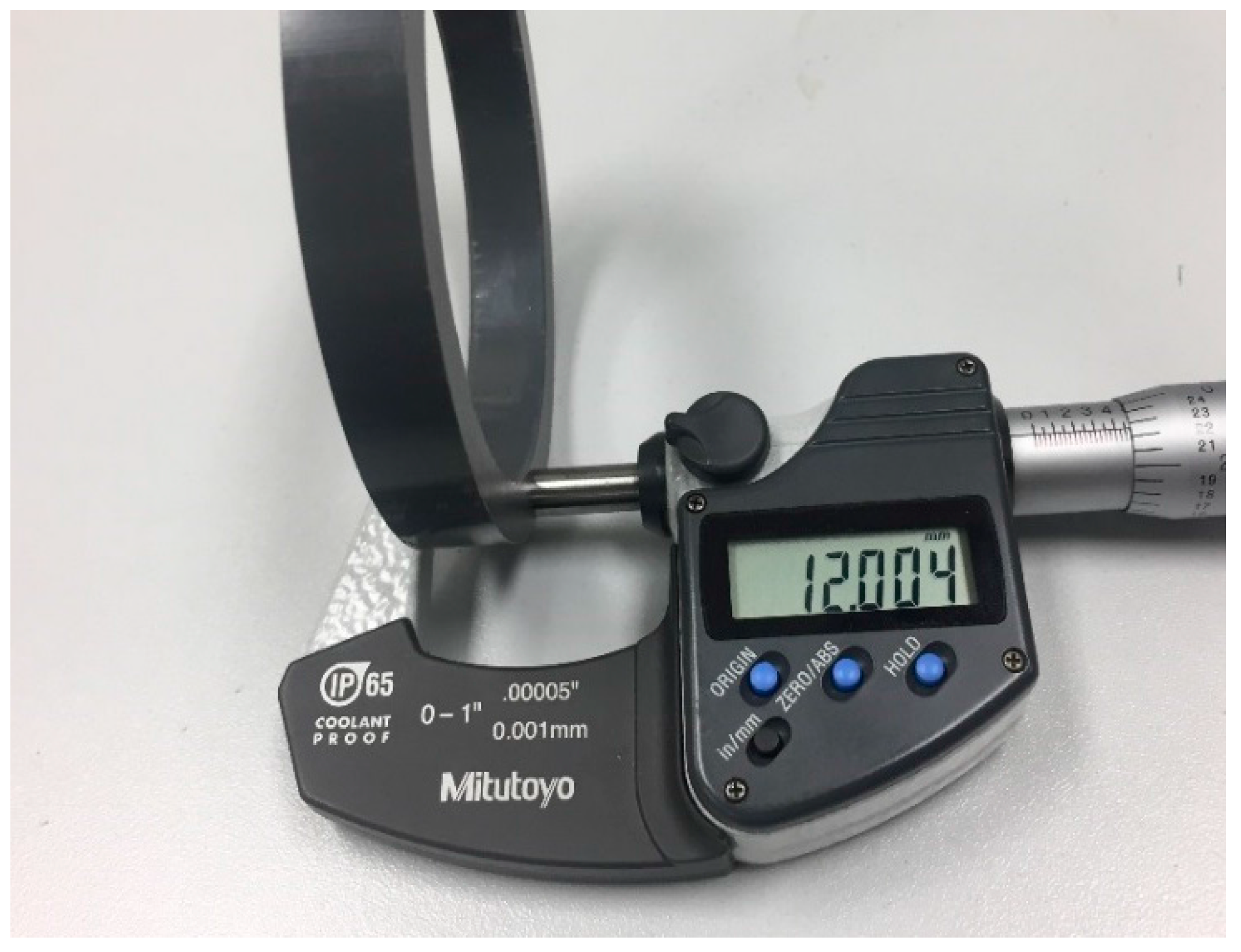
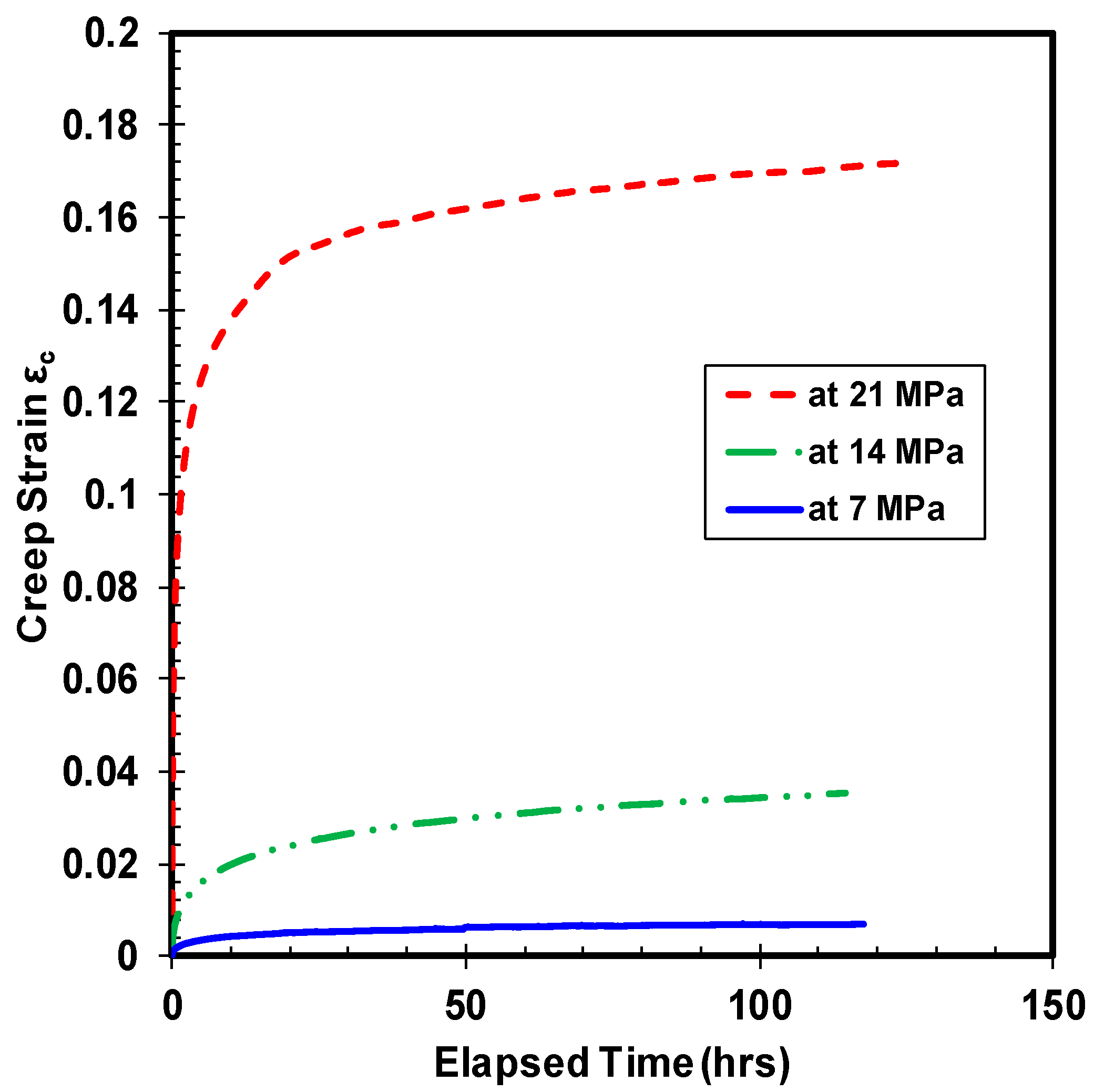
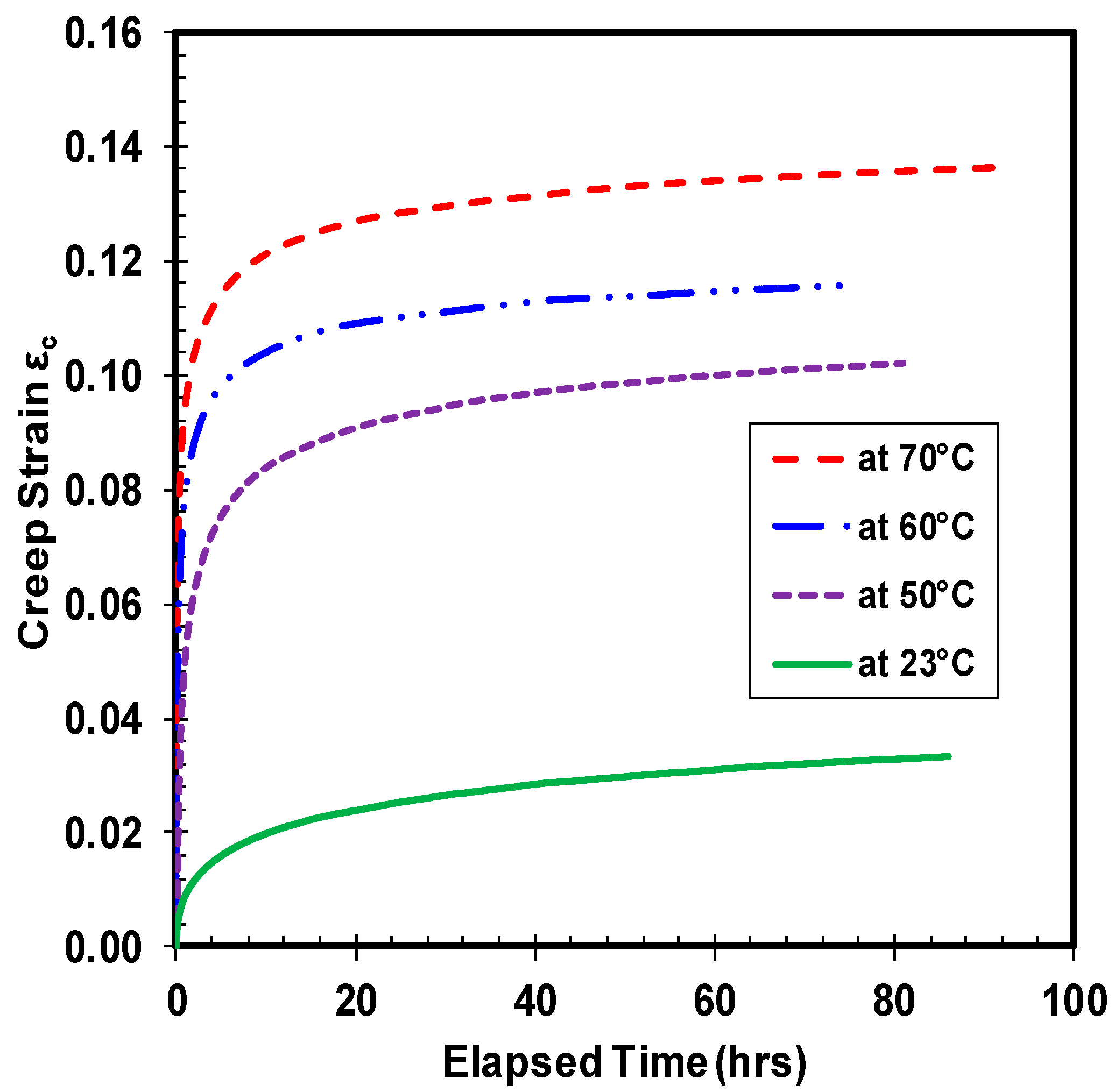
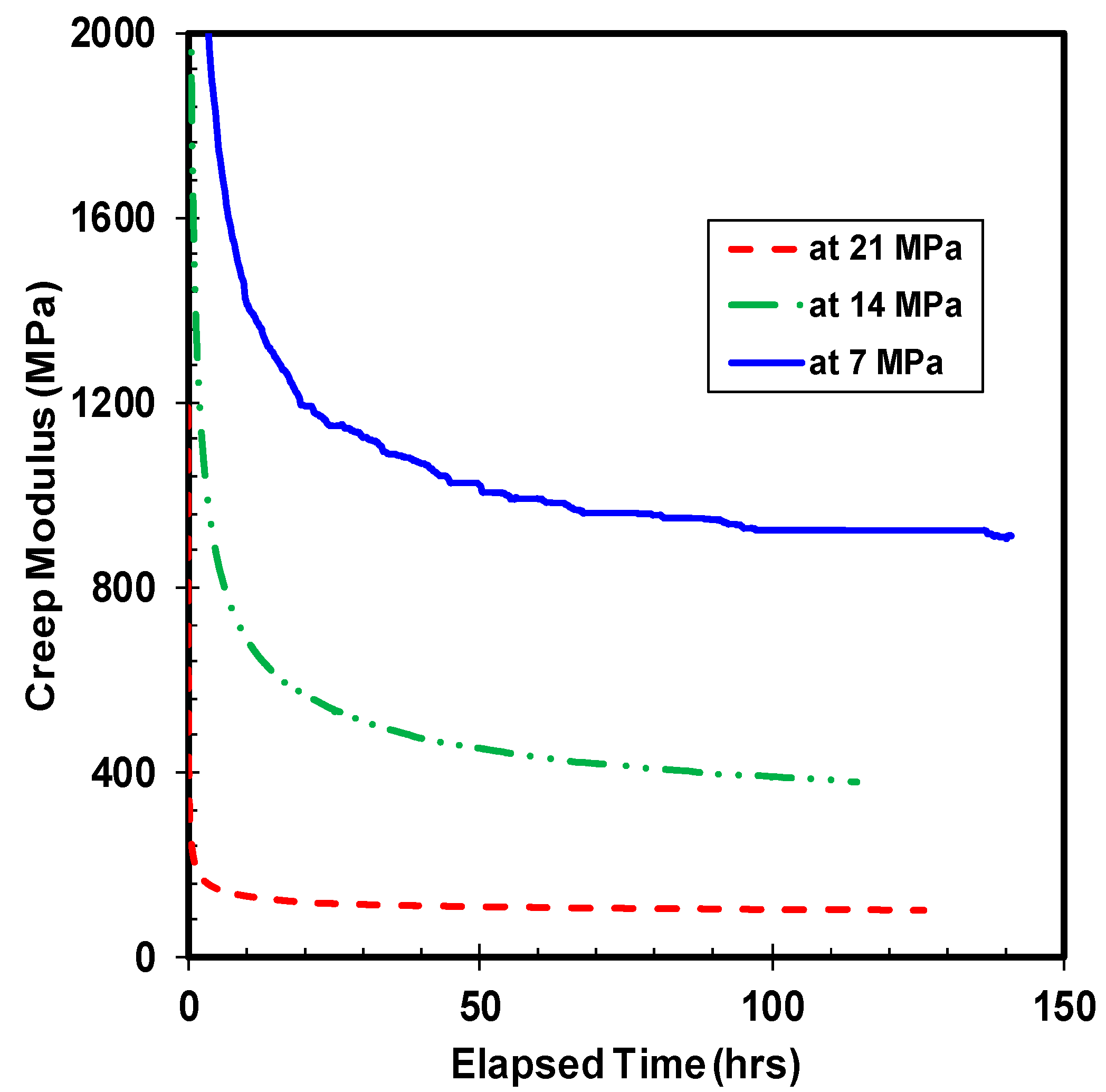
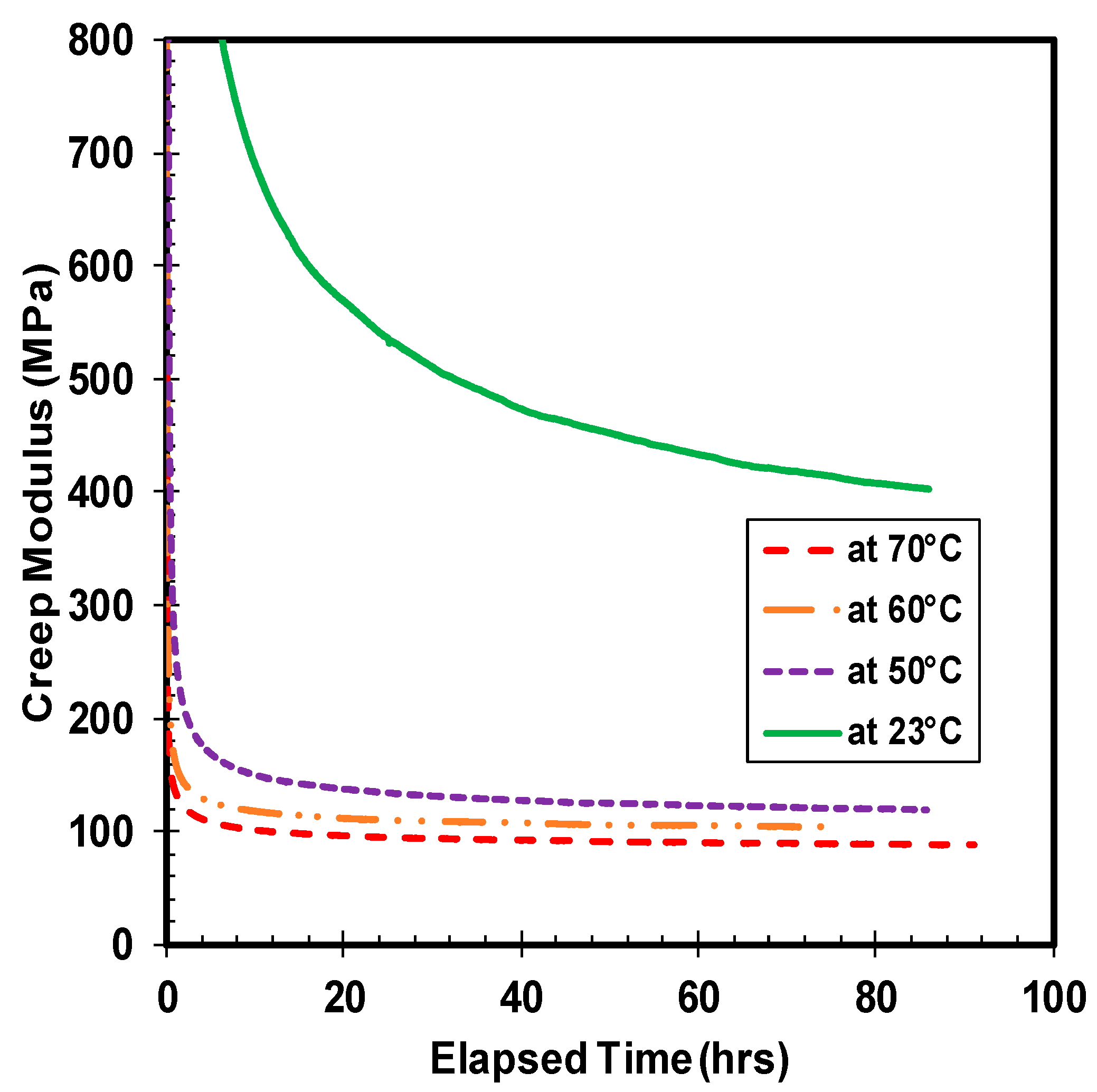
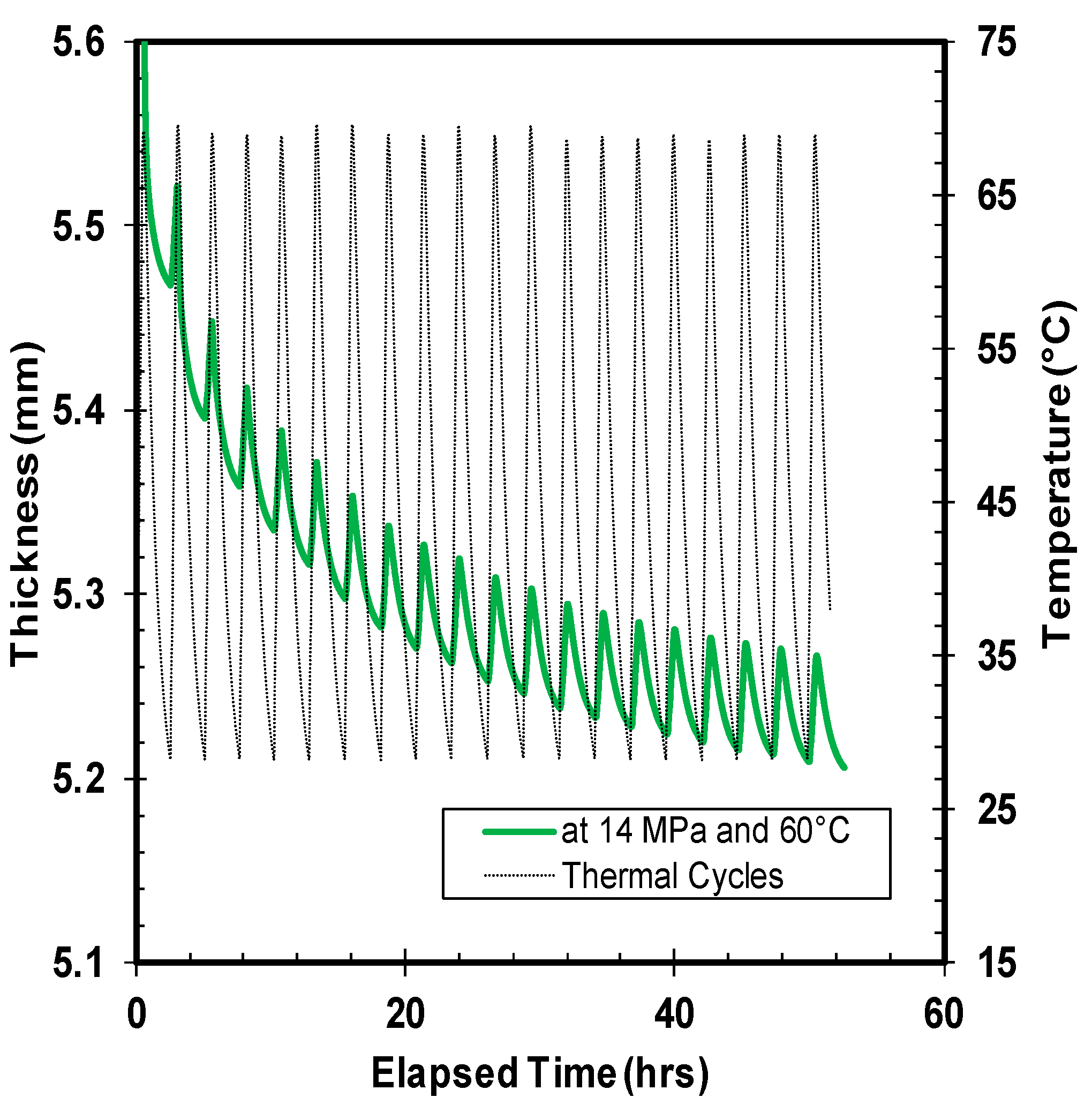
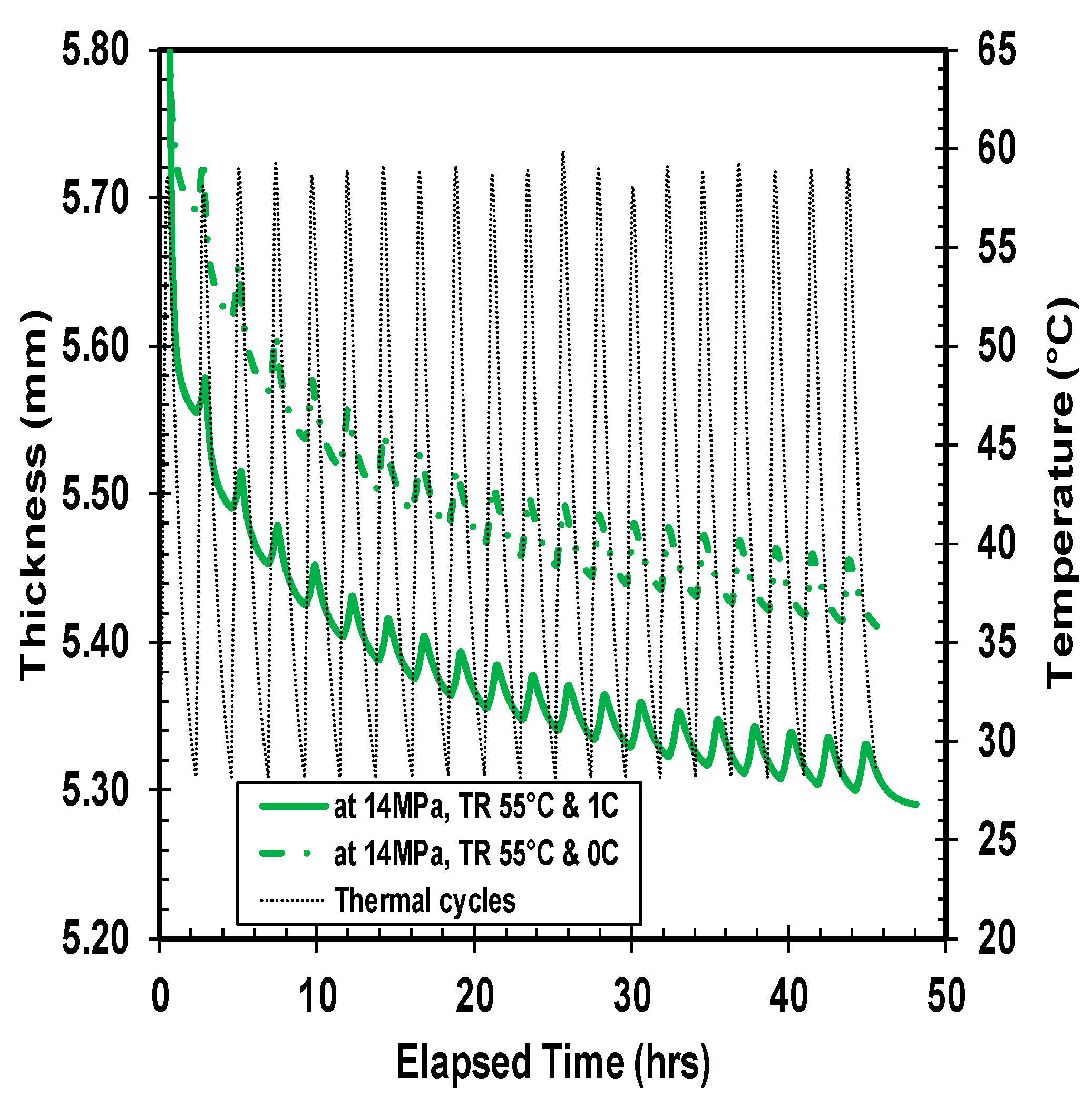
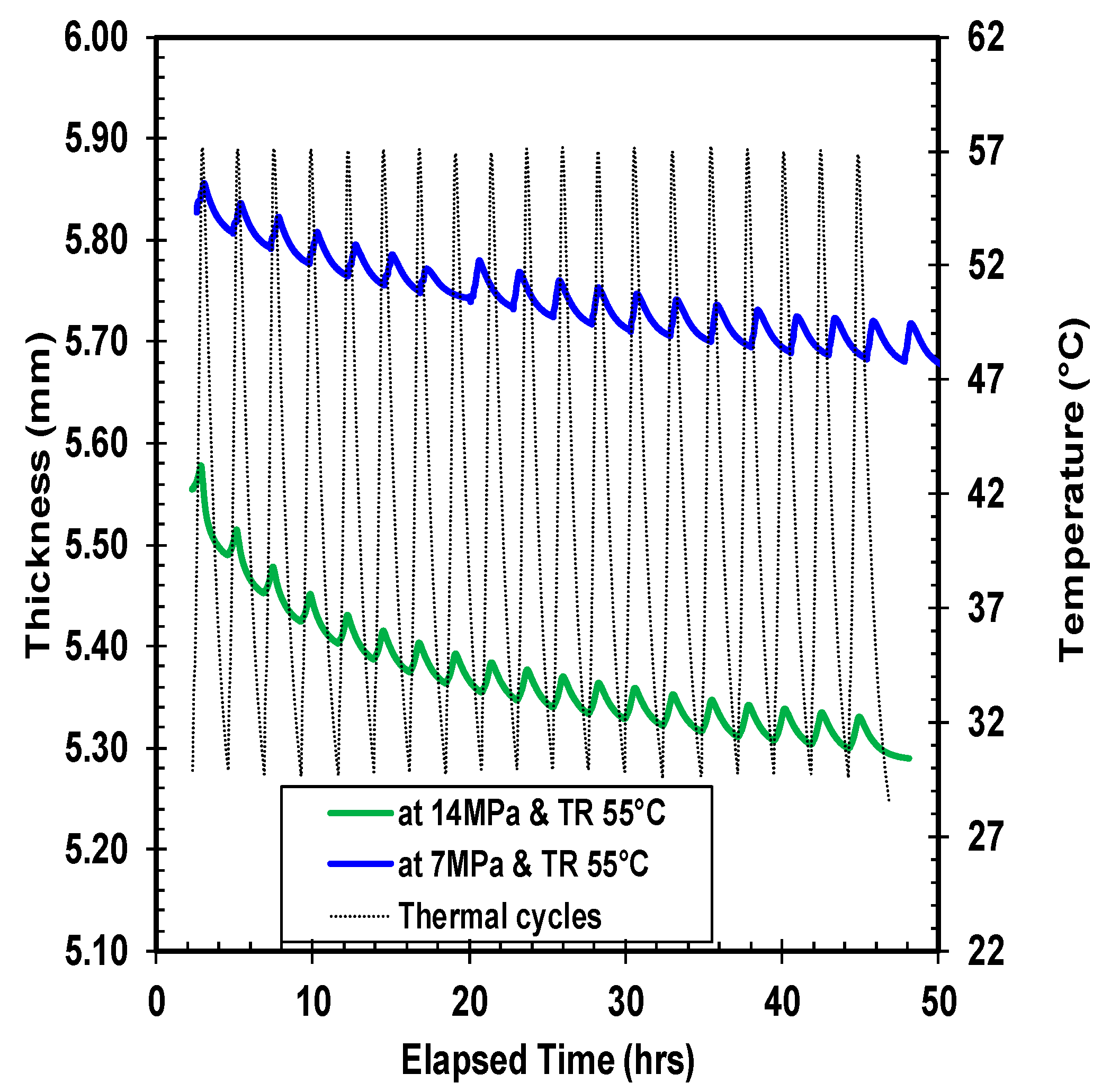
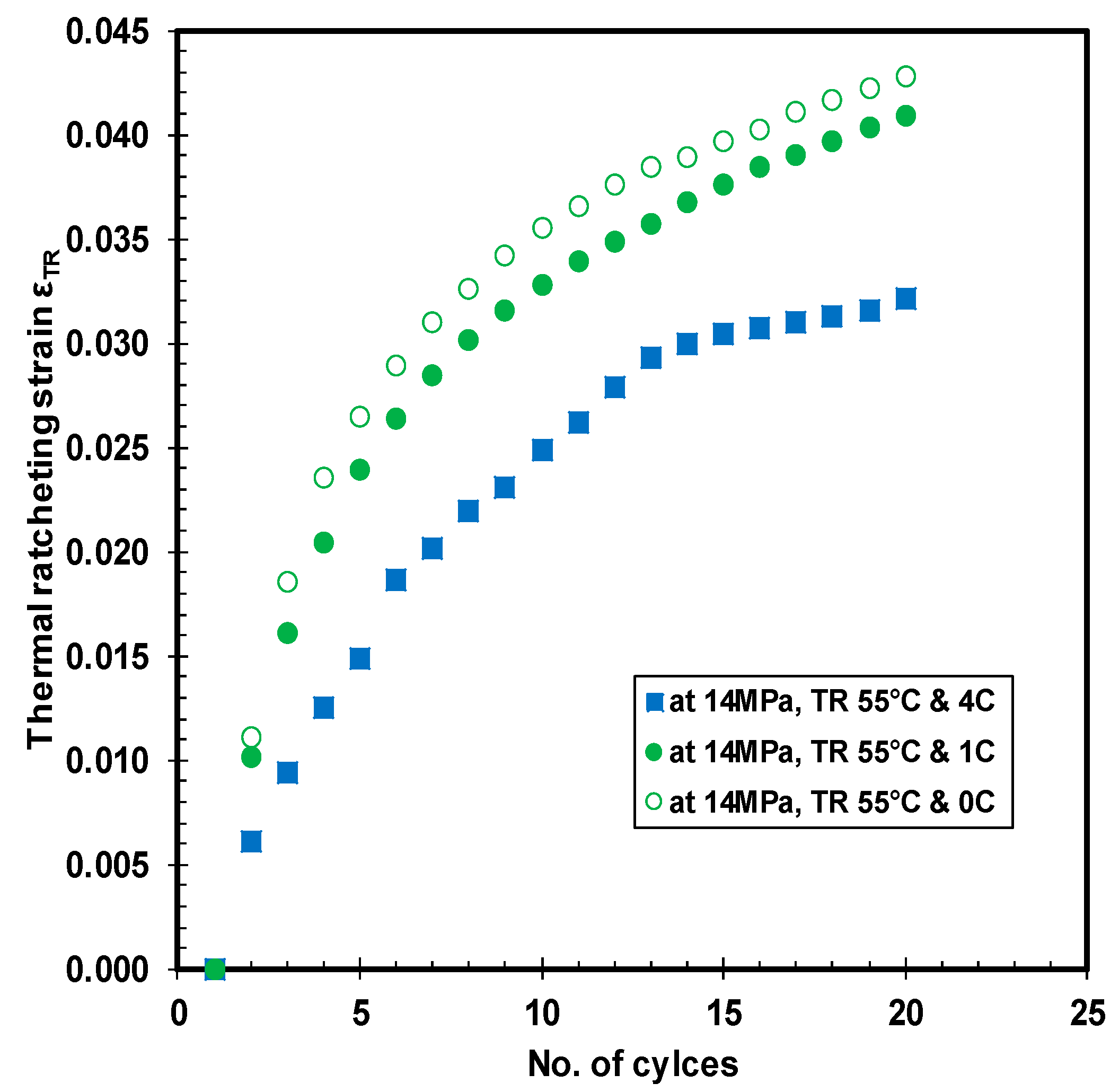

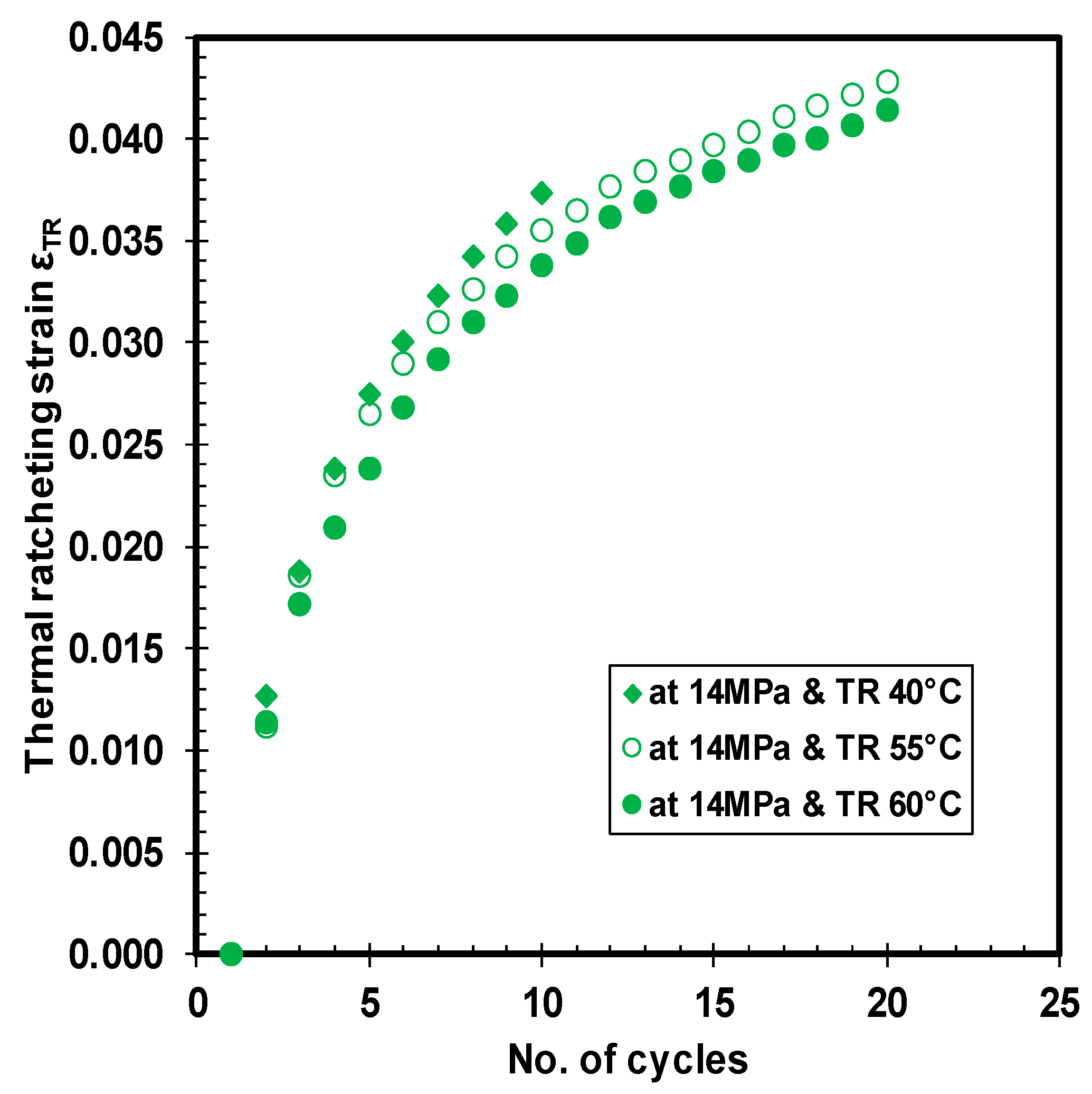
| High Density Polyethylene | |||
|---|---|---|---|
| Test No. | Temperature (°C) | Stress (MPa) | Test Time Period |
| 1 | 23 | 7, 14 & 21 | 5 days |
| 2 | 50 | 7 & 14 | 5 days |
| 3 | 60 | 7 & 14 | 5 days |
| 4 | 70 | 7, 14 & 21 | 5 days |
| Test No. | Applied Stress (MPa) | Creep Temp (°C) | Ratcheting Temp (°C) | Days of Creep + No. of Thermal Cycles |
|---|---|---|---|---|
| High Density Polyethylene | ||||
| T1 | 7 | 23 | 28–55 | 1 + 20 |
| T2 | 14 | -- | 28–55 | 0 + 20 |
| T3 | 14 | 23 | 28–55 | 1 + 20 |
| T4 | 14 | 23 | 28–55 | 4 + 20 |
| T5 | 14 | -- | 28–60 | 0 + 20 |
| T6 | 14 | -- | 28–40 | 0 + 10 |
© 2018 by the authors. Licensee MDPI, Basel, Switzerland. This article is an open access article distributed under the terms and conditions of the Creative Commons Attribution (CC BY) license (http://creativecommons.org/licenses/by/4.0/).
Share and Cite
Kanthabhabha Jeya, R.P.; Bouzid, A.-H. Compression Creep and Thermal Ratcheting Behavior of High Density Polyethylene (HDPE). Polymers 2018, 10, 156. https://doi.org/10.3390/polym10020156
Kanthabhabha Jeya RP, Bouzid A-H. Compression Creep and Thermal Ratcheting Behavior of High Density Polyethylene (HDPE). Polymers. 2018; 10(2):156. https://doi.org/10.3390/polym10020156
Chicago/Turabian StyleKanthabhabha Jeya, Rahul Palaniappan, and Abdel-Hakim Bouzid. 2018. "Compression Creep and Thermal Ratcheting Behavior of High Density Polyethylene (HDPE)" Polymers 10, no. 2: 156. https://doi.org/10.3390/polym10020156






